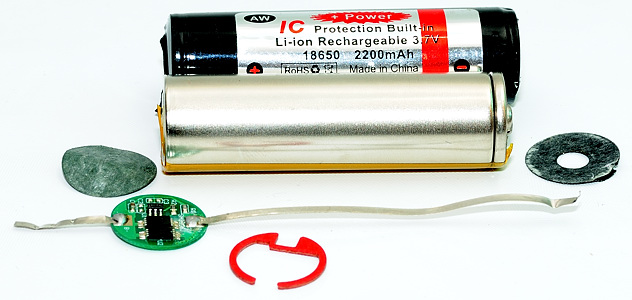Are Unprotected 18650 Batteries Safe?
Lithium-ion 18650 batteries power many of our devices today, from flashlights and vapes to power tools and even electric vehicles. Their high energy density makes them a top choice for portable power, but these batteries also come with safety considerations. In particular, the distinction between protected and unprotected 18650s leads many users to ask: are unprotected 18650 batteries safe?

Understanding 18650 Battery Safety
To answer this question, we first need to cover some key battery safety basics. 18650 refers to the size of these cylindrical lithium-ion cells – they measure 18mm x 65mm. The “protected vs unprotected” distinction refers to a small circuit board included in some 18650s.
This protection circuit monitors the battery’s voltage and current, preventing issues like over-charging, over-discharging, short circuits, and overheating. Protected 18650s cut power if any of those situations occur, while unprotected cells lack these safeguards.
So in that sense, unprotected cells are inherently less safe. However, with proper handling and charging, they can still be used quite safely. Here are some tips:
- Use an intelligent lithium-ion battery charger that prevents overcharging
- Don’t discharge cells below 2.5-3V – this damages and unsafe
- Store cells safely in cases away from metal objects to prevent shorts
- Use devices/battery holders meant for unprotected cells
- Monitor cell temperature – stop using if batteries get hot
- Replace aged batteries that show damage or swelling
As always, check the specifications of your device – some are designed explicitly for use with unprotected cells. When in doubt, go with protected 18650s if safety is your top concern.
Real-World Safety Comparison
Statistics on 18650 battery incidents are hard to come by. However, personal accounts and media reports show that the vast majority of issues stem from low-quality cells and chargers, counterfeit or reused batteries, or improper handling/use.
When reputable brand name cells are paired with quality chargers and used properly, failures and safety issues are extraordinarily rare. For a typical consumer use case, let’s consider high-drain vaping applications:
- Estimates suggest 5-10 million vaping devices sold per year use 18650 batteries
- Most devices require high-drain 20A+ batteries – usually unprotected cells
- Assuming 8% failure rate (very high), we would expect 400k-800k battery failures annually
- In reality, reported failures are a few hundred annually – overwhelmingly related to poor quality or counterfeit cells
So while unprotected cells lack safeguards, real-world risk seems extremely low with reputable cells and proper precautions. That said, safety is highly personal – some may opt for protected cells for added peace of mind.
Minimizing Risk With Unprotected 18650s
To safely utilize unprotected 18650 cells:
- Purchase reputable brand name cells – Sony, Samsung, LG, Panasonic and Sanyo sell quality cells optimized for different applications. Avoid no-name cells.
- Inspect condition carefully – look for damage, dents, leaks, wrapping issues. Don’t use damaged cells.
- Use suitable chargers and devices – ensure compatibility with unprotected cells, quality chargers prevent overcharging.
- Handle and store properly – use protective cases, prevent short circuits, monitor temperature.
- Learn safe cell voltage ranges – discharge no lower than 2.5-3V, charge to 4.2V max, storage at 3.6-3.9V.
- Periodically check capacity – replace cells that show severely decreased runtime/capacity after charging. Swelling, damage, or overheating during use all indicate it’s time to replace the cell.
Adhering to these best practices minimizes any risks related to using unprotected 18650 lithium batteries. Always exercise caution, but you can safely tap into the power that makes these cells so popular.
The Takeaway: Make Safety A Priority
Mishandling lithium-ion batteries can lead catastrophic failures. So whether you opt for protected or unprotected 18650s, make safety the #1 priority:
- Inspect cells and maintain properly
- Use quality chargers and devices
- Handle, store and dispose of cells carefully
- Know warning signs like heat, swelling, damage
- Learn safe voltage ranges for charging/discharging
- Monitor cell health and replace aging batteries
Lithium-ion batteries require extra care – but a little attention goes a long way. By making safety a priority with unprotected cells, consumers can safely power their favorite devices. Carelessness leads to problems, but educated use lets us leverage these batteries for years of optimal performance.
So are unprotected 18650 batteries safe? With responsible use and handling, unprotected cells pose very minimal risk to most users. Adhere to basic safety practices, choose reputable brands, and ensure your device needs unprotected cells – then reap the benefits in terms of value and performance that make 18650 lithium-ions so ubiquitous.







